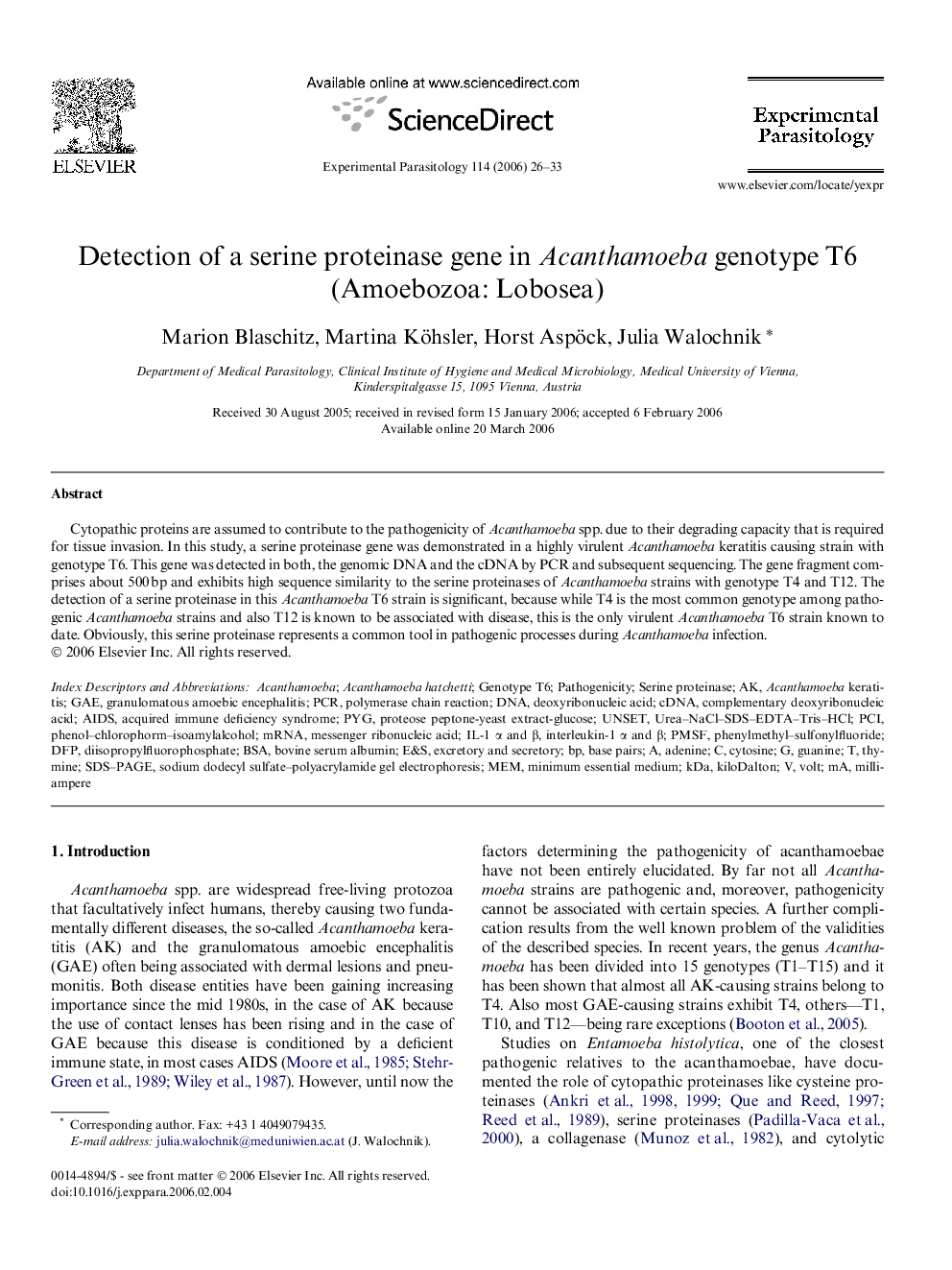| Article ID | Journal | Published Year | Pages | File Type |
|---|---|---|---|---|
| 4372024 | Experimental Parasitology | 2006 | 8 Pages |
Abstract
Cytopathic proteins are assumed to contribute to the pathogenicity of Acanthamoeba spp. due to their degrading capacity that is required for tissue invasion. In this study, a serine proteinase gene was demonstrated in a highly virulent Acanthamoeba keratitis causing strain with genotype T6. This gene was detected in both, the genomic DNA and the cDNA by PCR and subsequent sequencing. The gene fragment comprises about 500Â bp and exhibits high sequence similarity to the serine proteinases of Acanthamoeba strains with genotype T4 and T12. The detection of a serine proteinase in this Acanthamoeba T6 strain is significant, because while T4 is the most common genotype among pathogenic Acanthamoeba strains and also T12 is known to be associated with disease, this is the only virulent Acanthamoeba T6 strain known to date. Obviously, this serine proteinase represents a common tool in pathogenic processes during Acanthamoeba infection.
Keywords
DFPPYGPCIdiisopropylfluorophosphateAcanthamoebaPMSFGAEkiloDaltonkDamRNAAcanthamoeba keratitisBSAcDNADNASDS–PAGEAdeninebovine serum albuminGranulomatous amoebic encephalitisdeoxyribonucleic acidcomplementary deoxyribonucleic acidsodium dodecyl sulfate–polyacrylamide gel electrophoresisAIDSthyminebase pairsminimum essential mediummessenger ribonucleic acidacquired immune deficiency syndromecytosineMEMpolymerase chain reactionPCRVOLTPathogenicitySerine proteinaseGuanine
Related Topics
Life Sciences
Immunology and Microbiology
Parasitology
Authors
Marion Blaschitz, Martina Köhsler, Horst Aspöck, Julia Walochnik,
